Intro
At the end of last year, I put together this thread breaking down a big change in Emma Raducanu’s service motion that she worked on gradually implementing throughout the clay and into the grass season. Below is the same side-by-side from that thread.
It was a big help in improving her ability to spot serve and, crucially, hit reliable flat serves both wide on the Ad side and down the T on the deuce side. Before this, she had been struggling to consistently hit those kinds of serves and instead had to lean on very predictable and very safe slider serves into the opposite sides of those boxes, which saw the In % dwarf the Win % on 1st serves.
A year on, with the more permanent addition of Mark Petchey to the coaching setup, we’ve seen a return to the motion (shown on the left) post-Miami. This is not a negative, though. Intentionally or not, Emma’s serve has effectively come full circle in the way you would have hoped it would, and that’s what I aim to break down here.
For the sake of not repeating some of the same details, and to show a more meaningful comparison, I’ll only be comparing her current motion to the old one in the left of the video above.
Serve Comparison
So, below is Emma’s serve at Abu Dhabi last year versus her serve at Queens this year, with a slowed down side-by-side clip following the regular speed clips.
The first thing to notice is the position. Emma’s been guilty, and still is in certain cases (more so on the deuce court), of telegraphing her serve locations through how she positions herself along the baseline.
Obviously, the wider position makes it a bit easier to clear the net for righties attacking the wide Ad spot, but it equally makes it harder to land T serves, thus reducing the likelihood of her going for them from so wide. So, the current position closer to the T, which is enabled by her confidence to hit these wide serves more regularly now, provides more disguise.
You then have the body spread.
Emma’s stance is more compact now, which is a running theme throughout the motion, with a narrower silhouette and the racket starting closer in to the body. Already, here, she looks a little more coiled.
Not only would better coiling be its likely goal but I imagine shaving off some unnecessary milliseconds getting from one point to the next would be helpful for concentrating her energy.
As a result, the typical rocking back motion to coil at the hip, which comes with a pointed left foot, is able to happen sooner.
We also see that more tucked-in racket-holding arm promoting a tighter shoulder coil, that will help when unloading later in the motion.
What remains the same in both motions, though, is a loose wrist whilst gripping the racket.
The elasticity of the grip makes it easier to fling the racket, and so there’s minimal tension during the serve, allowing the energy created by the motion to be more effectively transferred through to the ball.
The first, more notable difference, however, is the take-back as the ball’s tossed.
Emma, unlike in either of her two previous motions, now takes her racket back all the way towards her back leg, rather than starting to raise the racket in line with her front leg.
Why she starts the motion with a more open racket face is likely to facilitate this.
This approach does still bear similarities to the old, especially when compared with the motion that is sandwiched between the two, which was much more abbreviated.
There was more urgency in that motion (pictured right) to get into the trophy position, but doing so can lead to slightly more stop-start, 0-to-100-type acceleration. The old and the new motions are more ideal in the sense of building and using the momentum from the start of the motion to aid the speed at the peak of the serve.
What taking it back further across allows Emma to do is deepen the coil, promoting greater internal shoulder rotation.
Even in Emma’s previous, more drawn-out motion, the racket is still faster getting up to the ball than the current version, but does so in a way that leaves her body more parallel with the ball, meaning there’s less uncoiling that can be done.
Emma taking longer to reach the same position with the racket means she then also has more room to accelerate the racket through, allowing her to build more speed.
At the actual point of the trophy position, we can see the now more exaggerated coiling of the body.
Not only is the right shoulder pulled further around, but her tilt down is steeper and there’s even more deliberacy with how she opens her palm up the ball. It all feels more uniform and precise. You can even see that the right knee and foot are slightly further short of the left knee and foot.
What shows the explosive results of this tight coiling is how quickly then Emma meets the ball once unloading compared to before.
As seen in this collection of images, it takes Emma a couple more frames’ worth to actually reach the ball in her old motion compared to her new one.
The elbow drive is greater, the extent of the heavy uncoiling is evident in how far around the right leg now gets to be almost square on with the net, and both her body and arm are unloading at the same time. In the old motion, it almost looks as if the body has already done most of its uncoiling before Emma’s arm has gotten up to the ball.
As you can also deduce from this, the motion as a whole is slightly quicker. Emma’s high ball toss was one of the main limiters since contact is harder to time and the longer wait compared to a shorter ball toss can lead to wasted momentum, whereas shorter ball tosses generally force you to accelerate to meet the ball in time.
Obviously, the current motion isn’t far off being the same, whereas the in-between motion was noticeably shorter with a lower toss, so it’s perhaps another area to look at re-tightening. However, this could be viewed as a natural trade-off, where the ends now justify the means due to how well all the cogs function together compared to before when it more often exposed a lack of unity in the action.
Her precise actions are evident in the unravelling of the motion, too.
The left arm, from its deliberately rigid position in trophy phase, really pulls its weight as a counter-force to aid with the full racket acceleration. That’s why it comes all the way through here, whereas before it was left tucked in a little lazily.
She’s now also sticking the landing better.
At the split step following the initial left foot landing, Emma’s now doing a better job of really pushing off that left leg to be in position immediately.
In the left image, she’s using the right as an additional step to platform her left properly, whereas in the right image, she’s already managed to plant both feet with a much more positive open stance.
As a result, she’s then that fraction quicker to angle herself towards the ball and to be behind the baseline, which makes all the difference when it comes to getting behind quick returns fired back down to feet.
There’s also been mention of Petchey adding weight to Emma’s racket, which of course serves to add to the weight she’s able to get behind the ball to increase her speed.
Obviously, this piece has been filled with a lot more visuals than statistics, mostly because it’s quite hard to pinpoint useful samples, not just because of how the tour is (with surfaces, opposition levels, etc varying) but also because of lingering back issues plaguing Emma this year.
The main thing has been to flip those aforementioned percentages, like below, which Emma’s done.
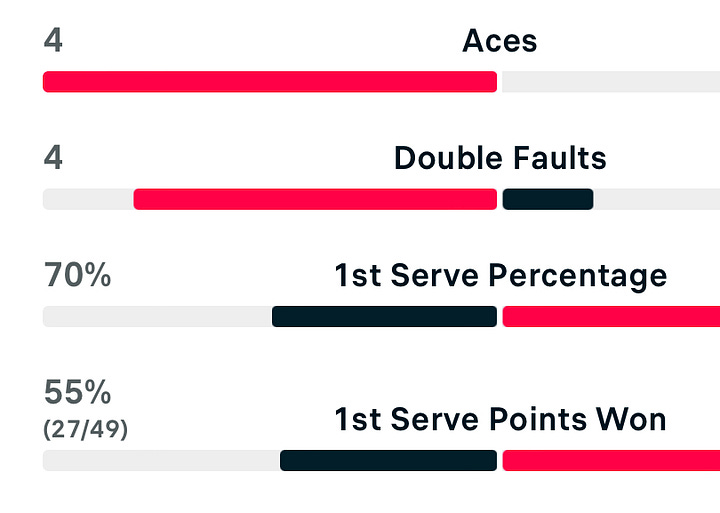

But the damage the back issue can do is evident in the service figures from her week at Queens, going from the win-to-in % differential being +11% down to -5%, and continuing vs Qinwen.
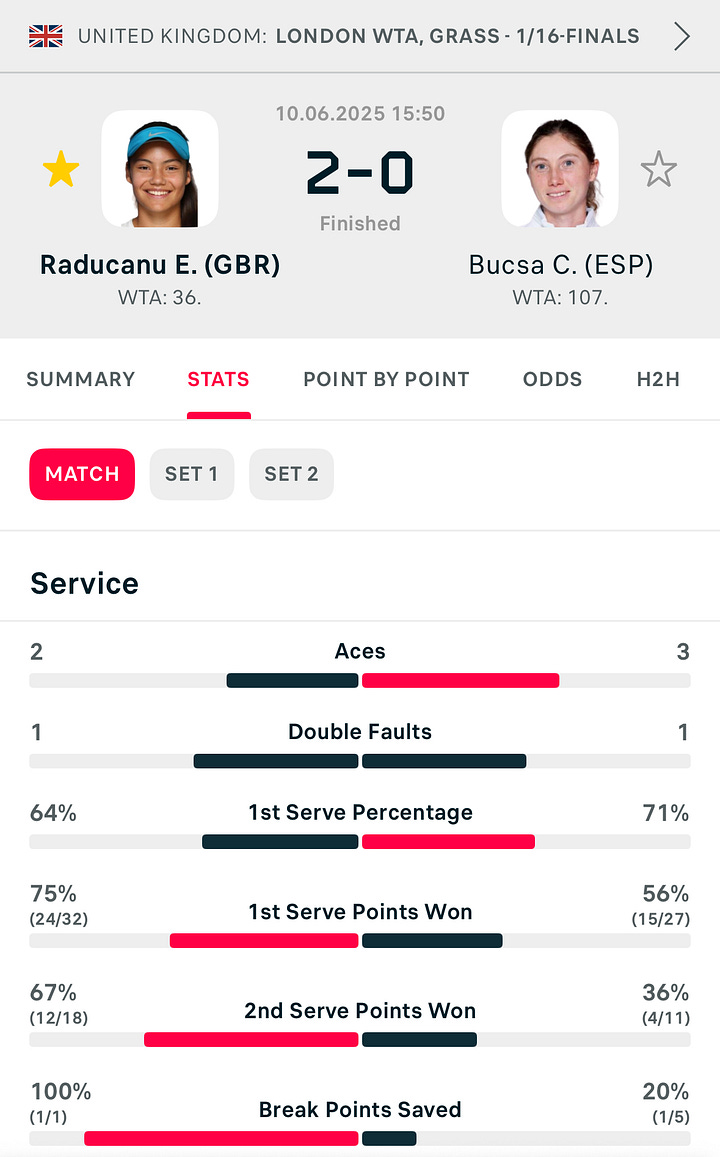
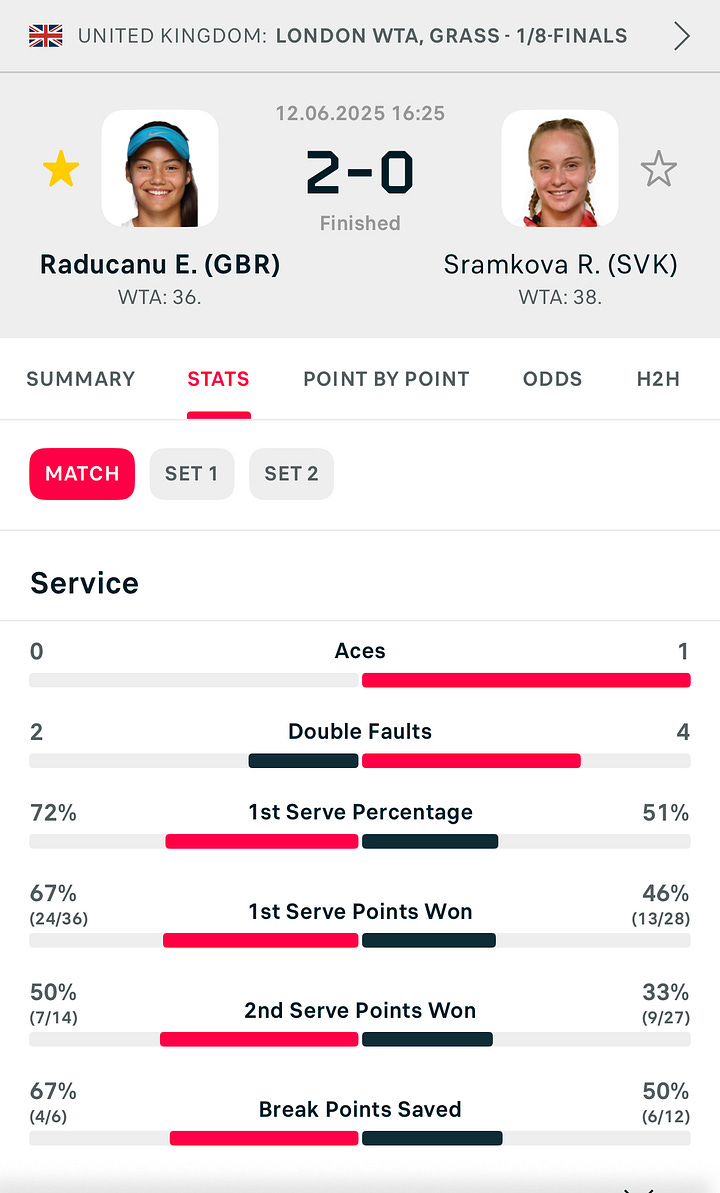
These back spasms she’s been periodically suffering from this year massively hinder her ability to serve, among many other things, and it’s fast becoming a black cloud hanging over her head.
It disrupted her buildup to the Australian Open, resulting in a quickly-deteriorating serve at the Slam itself. And, although it mostly subsided for a while thereafter, the issue reared its head again on the clay in Strasbourg prior to Roland Garros and has gotten worse again in the weeks since, now forcing her to pull out of Berlin.
If it is a more long-term issue, then, unfortunately, we might not even see the best of these improvements pay out, and could instead be seeing her abbreviate her motion again, but this time with the aim of simply reducing its physical burden on her back.
Hopefully, this isn’t as severe an issue as could be feared, considering how much Emma’s already had to deal with and how close she’s come to finally finding her feet at the top of the tour.
~
Thanks for reading, you can find me here.





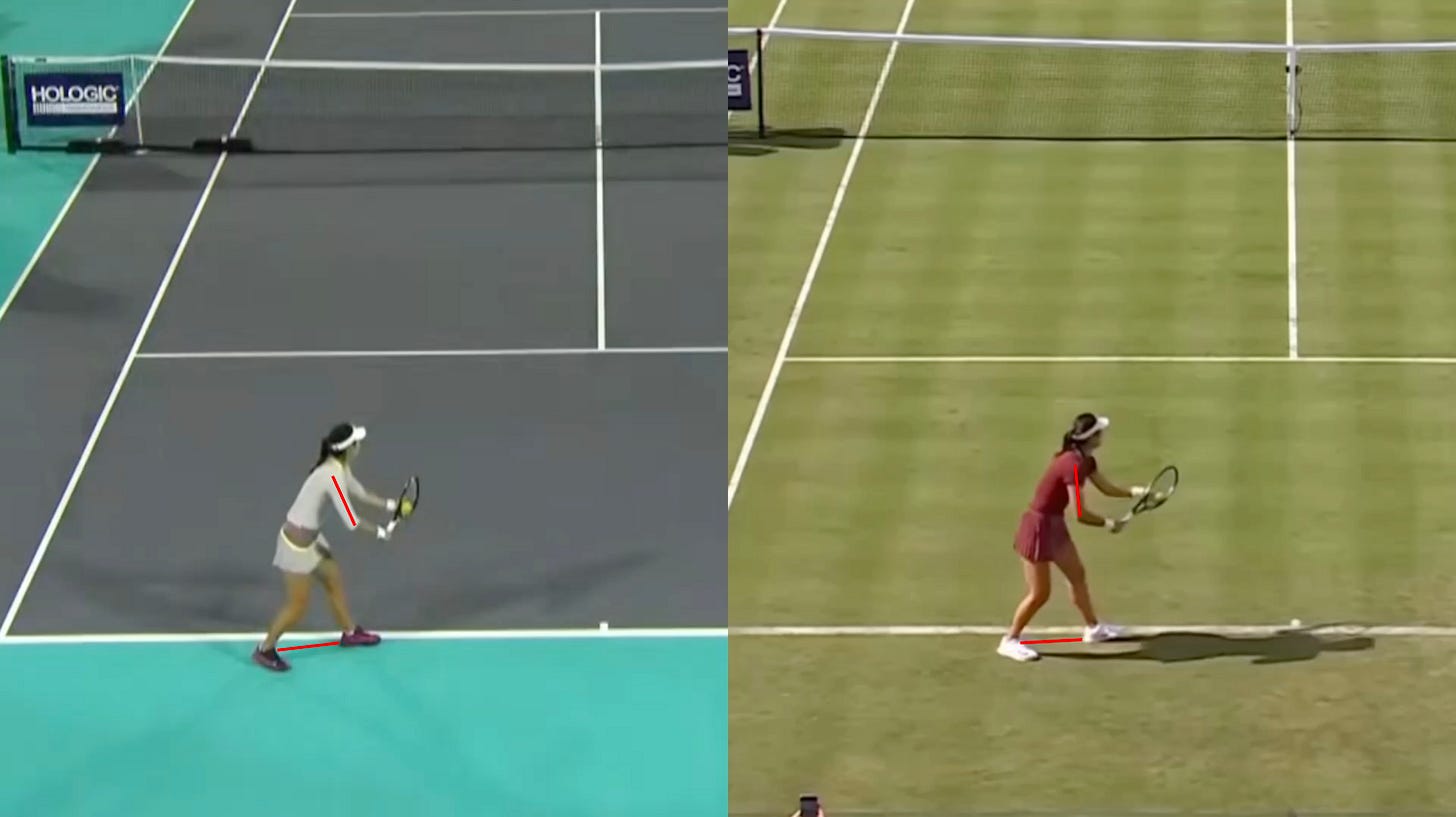
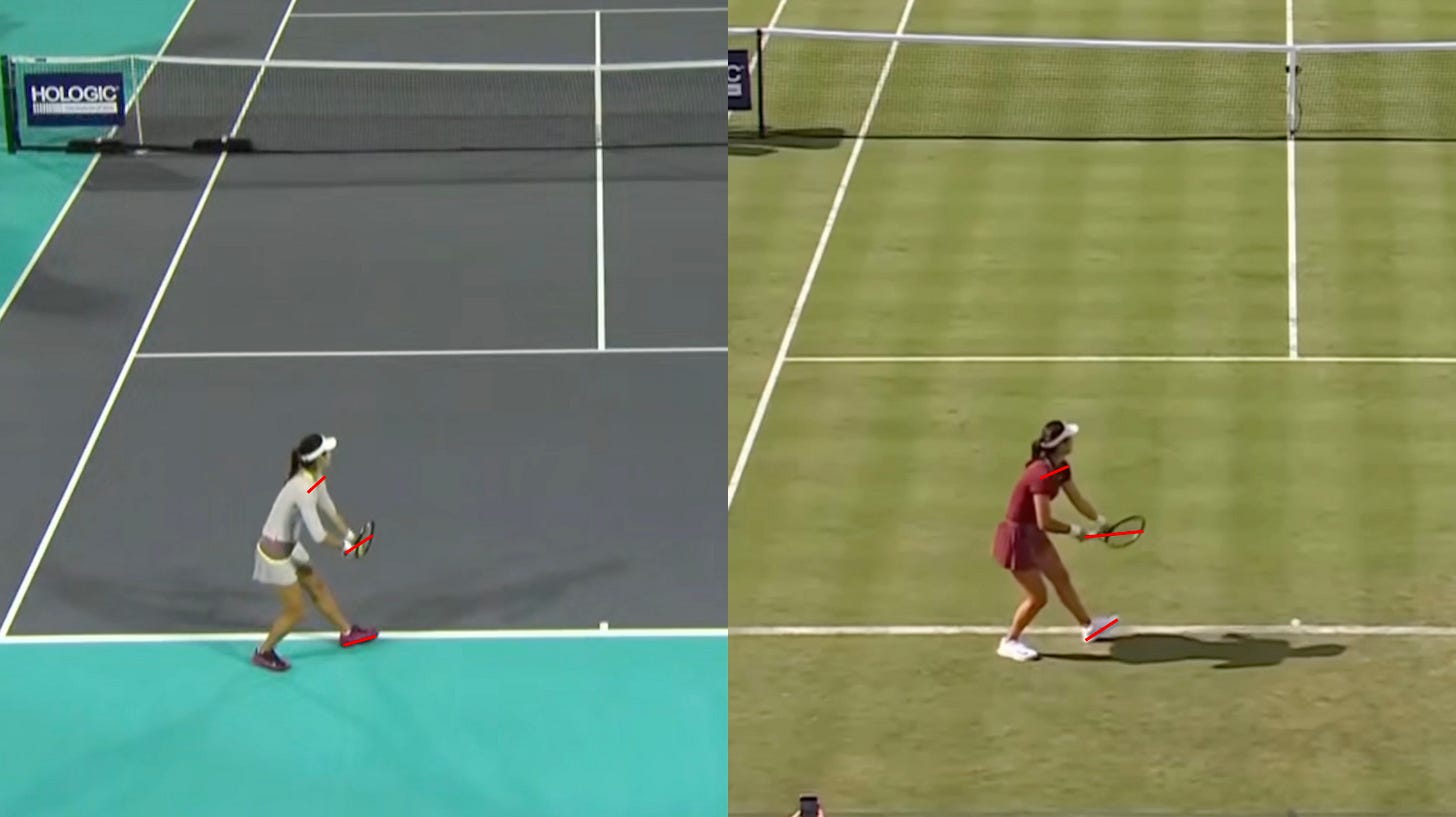

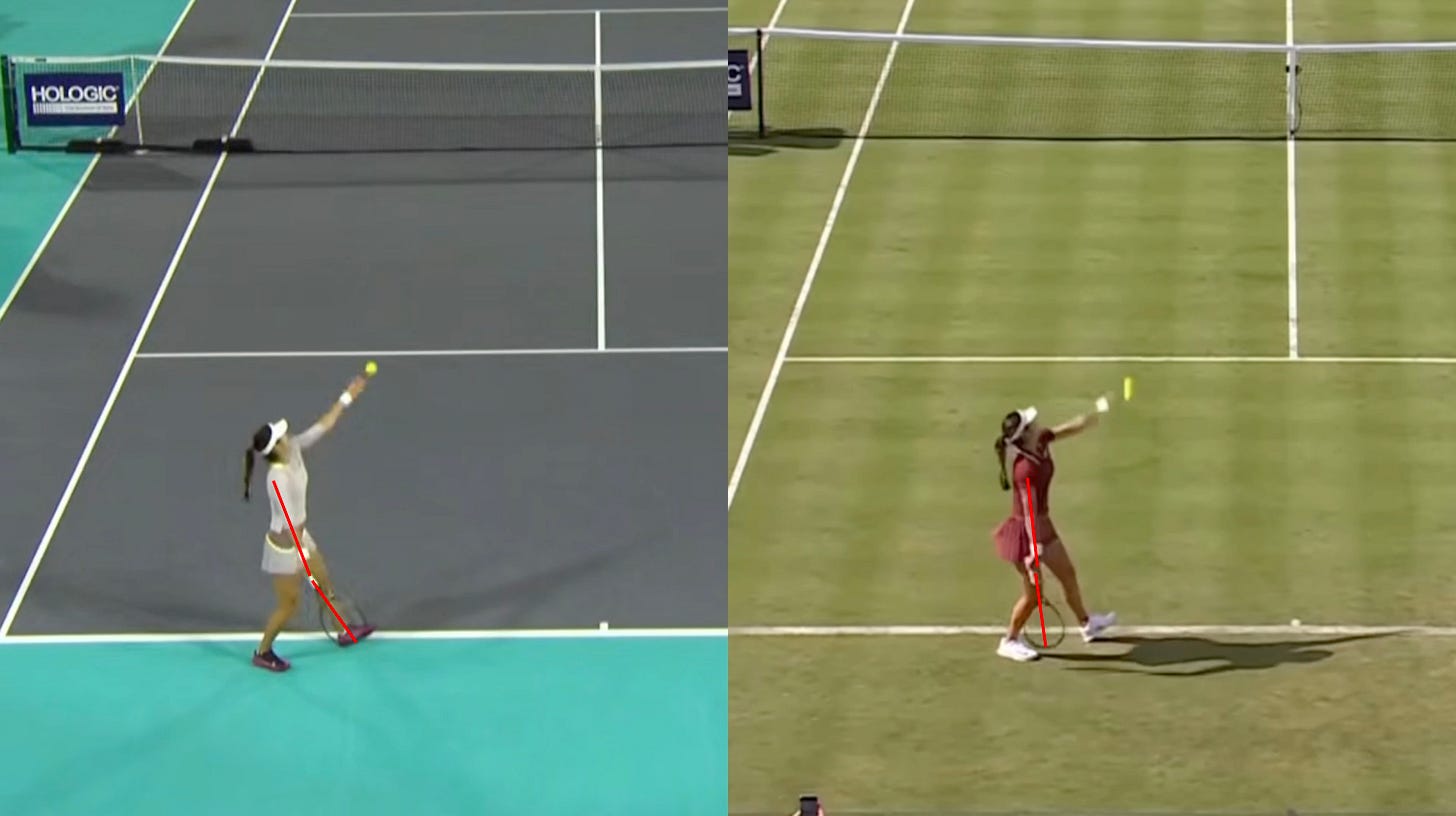
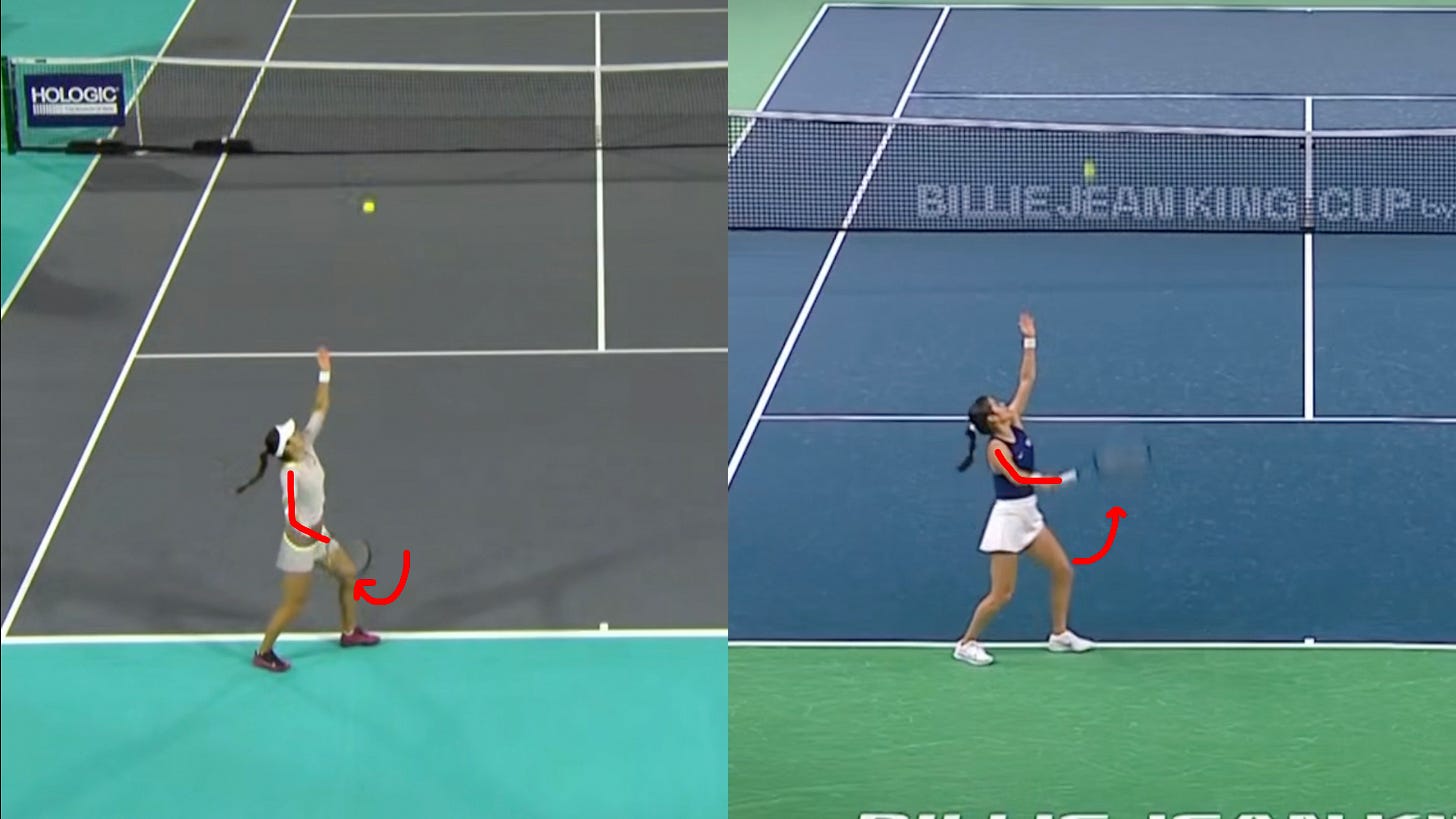
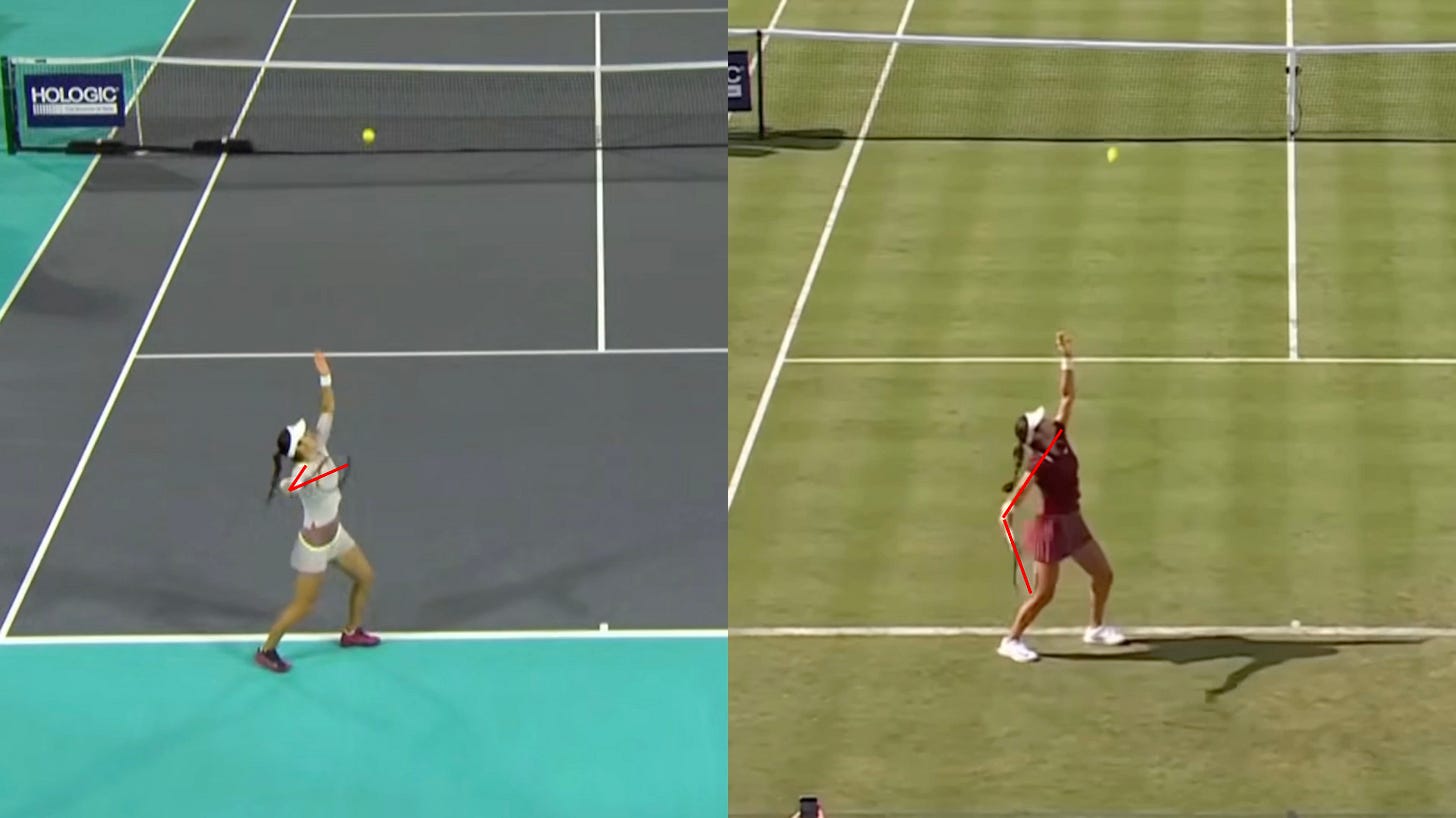
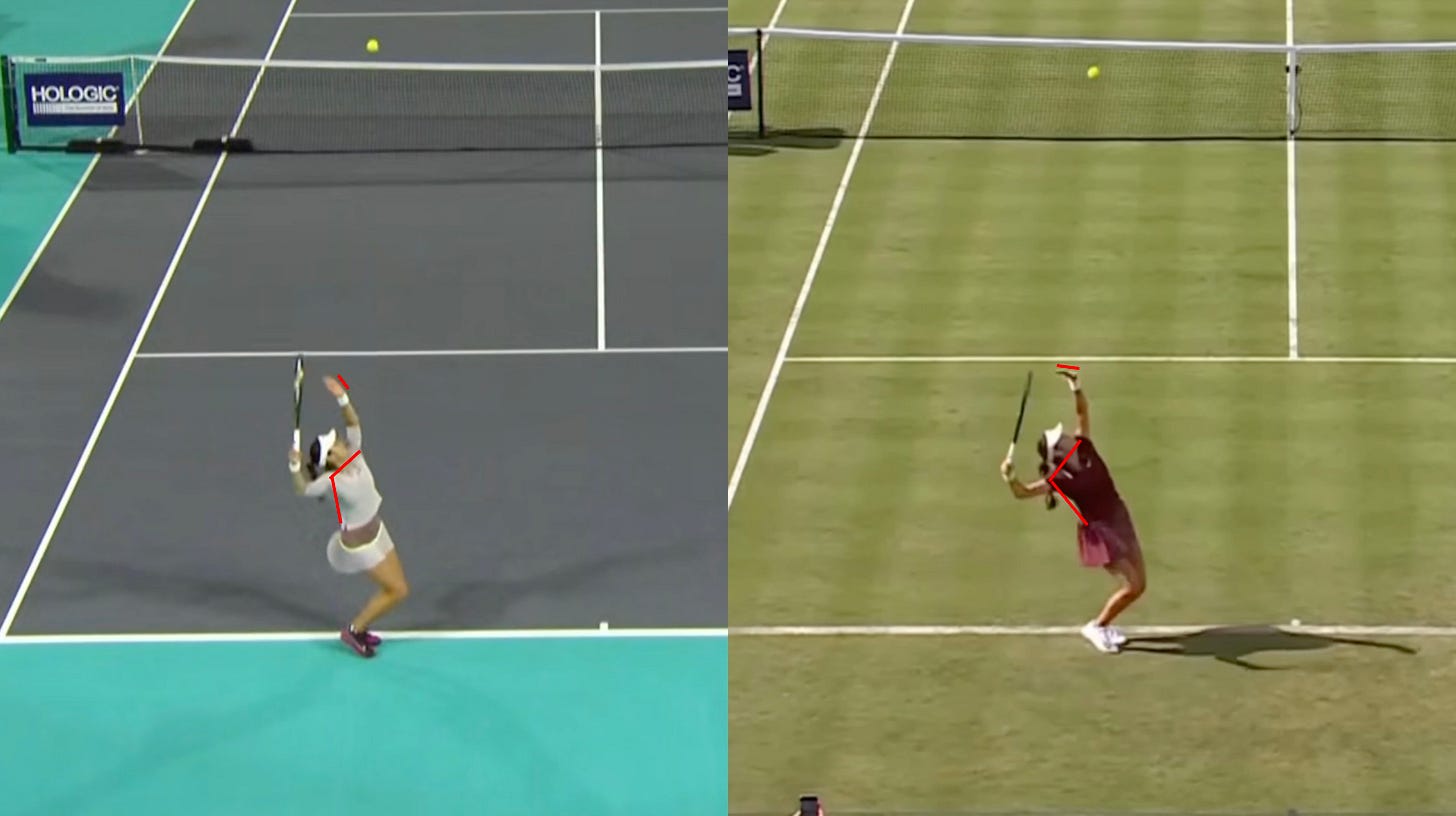
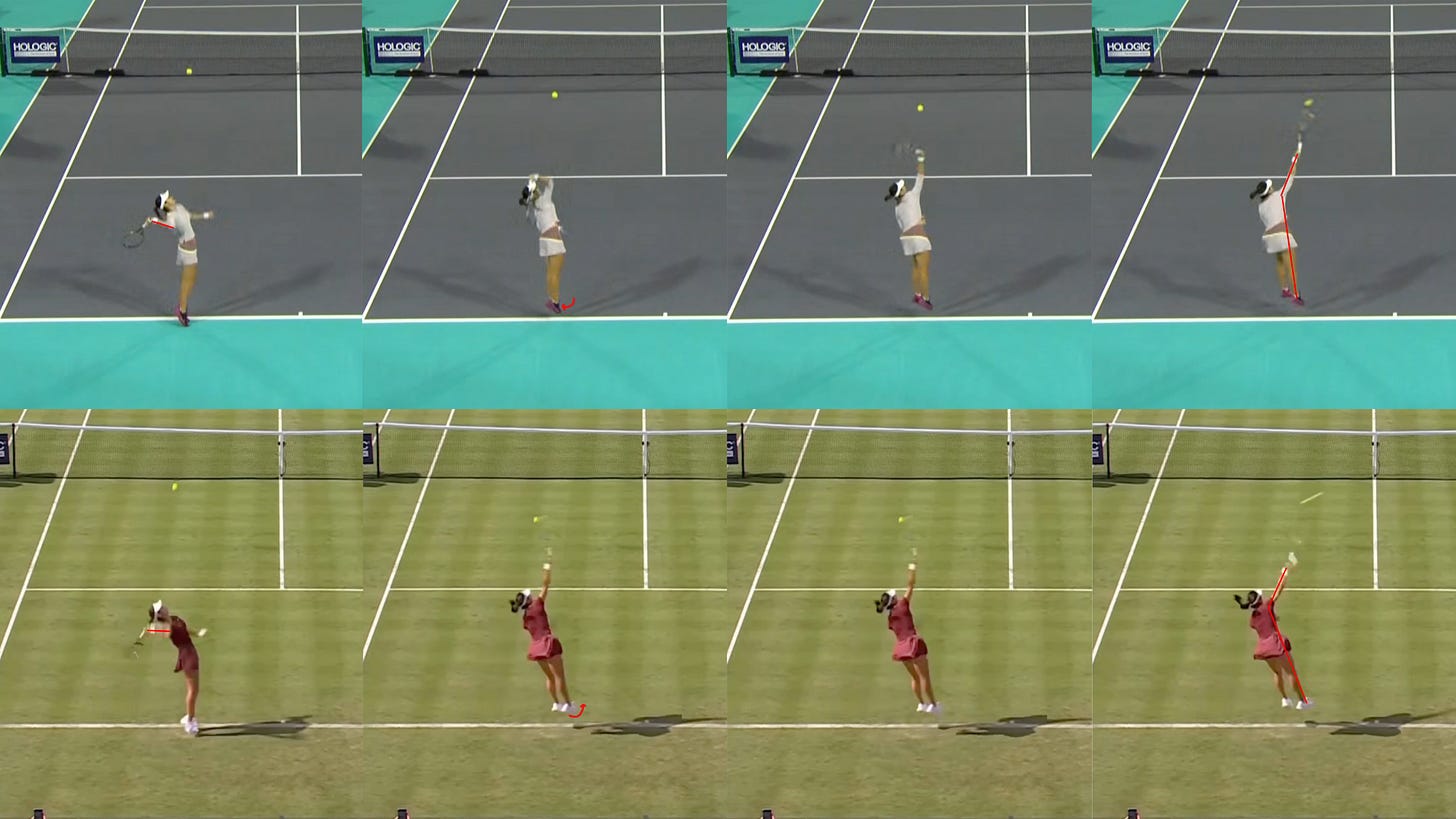
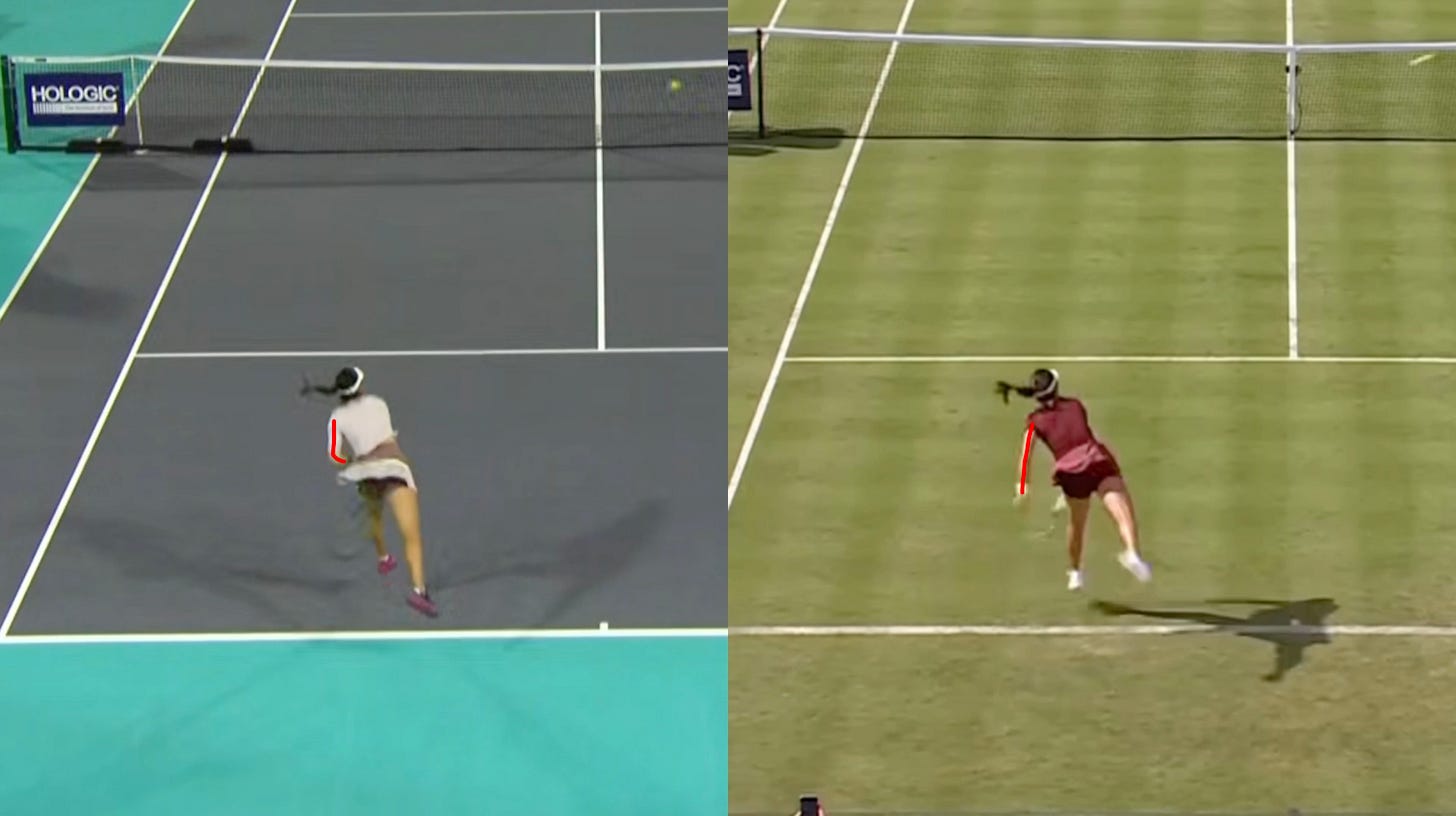
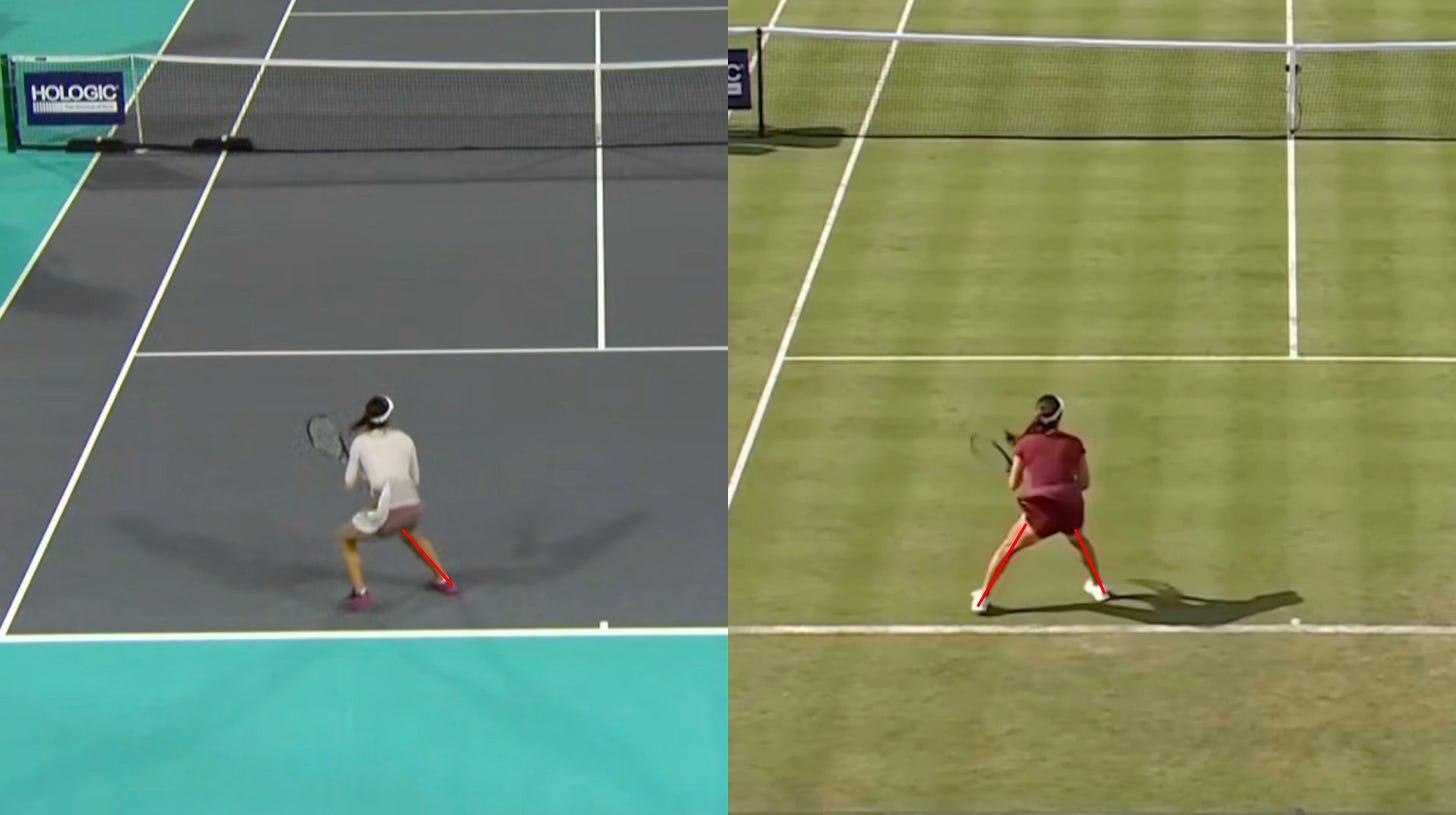
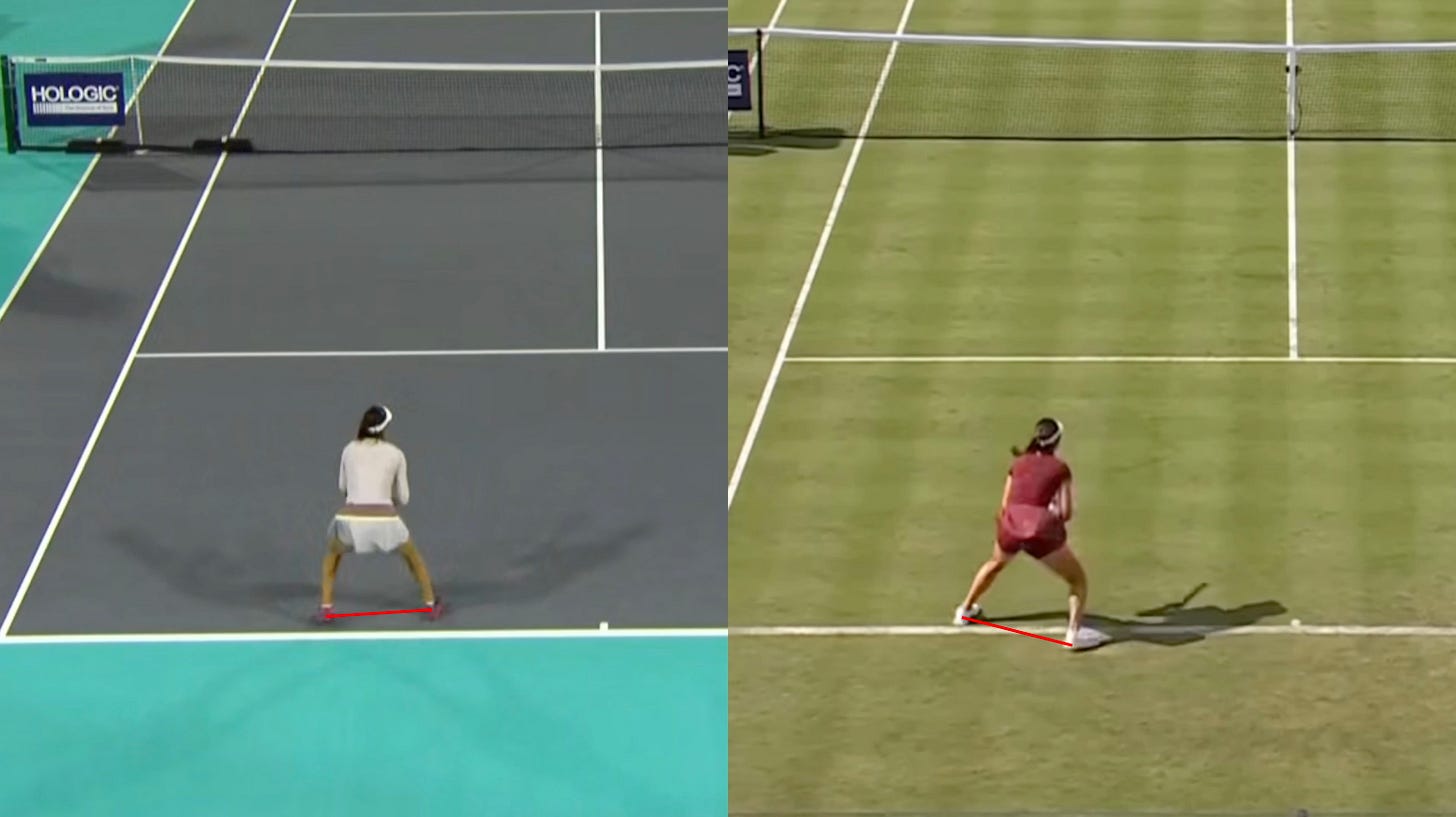
Great article, really insightful! I'd seen a few comments from Emma fans on other sites worrying about how her serve motion was reverting back to how it used to be so it's nice to read a technical analysis on what's changed, how it affects her serving, and why it's not necessarily a bad thing.
Glad to see you posting again!